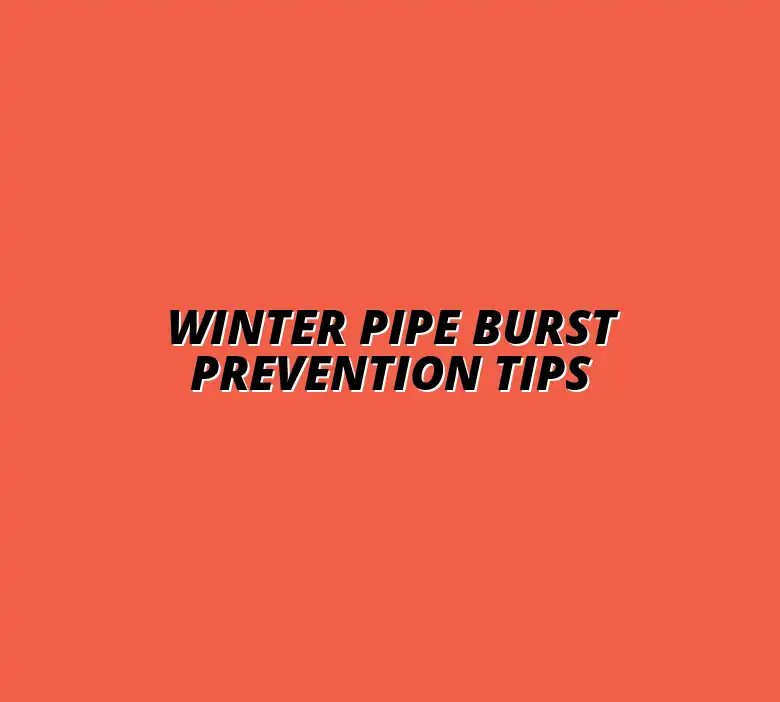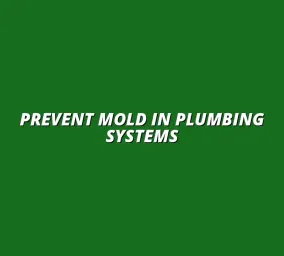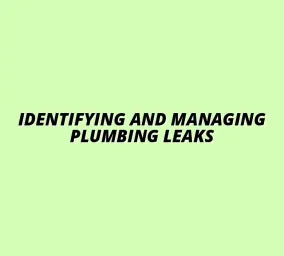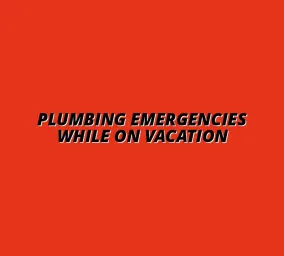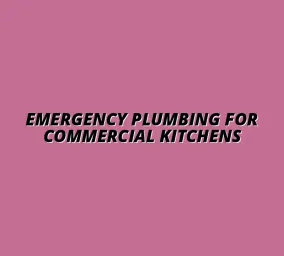Winter Pipe Burst Prevention Tips
Understanding Water Damage Risks from Burst Pipes in Winter
Every winter, many homeowners face the frightening reality of water damage caused by burst pipes. Understanding how winter conditions contribute to these plumbing disasters is crucial for preventing costly repairs and damaging leaks. Let’s explore how freezing temperatures and other factors create the perfect storm for pipes to fail during the colder months.
How Winter Conditions Lead to Pipe Bursts
When winter settles in, temperatures can drop well below freezing, putting your plumbing systems at serious risk. As the temperature falls, the water inside pipes can freeze and expand, leading to immense pressure on the pipe walls. If this pressure exceeds the pipe’s ability to contain it, a burst can occur, releasing water into your home. Learning how to prevent frozen pipes this winter is crucial.
The Impact of Freezing Temperatures on Plumbing Systems
Freezing temperatures have a direct impact on plumbing systems, especially in unheated areas such as attics, basements, and crawl spaces. The expansion of ice can create cracks and weaknesses in pipes, which can lead to leaks when the ice melts. Therefore, understanding your home's layout and where pipes are located is essential for prevention.
Moreover, pipes made from certain materials, like PVC or copper, can be more susceptible to freezing. Homeowners should be particularly vigilant about these pipes during extreme cold spells. For helpful tips on winterizing your kitchen plumbing, check out this guide.
Common Causes of Burst Pipes During Winter Months
- Rapid temperature drops that freeze water quickly
- Pipes located against exterior walls that lack insulation
- Blocked vents or inadequate heating in certain areas
- Improperly sealed windows or doors allowing cold drafts
Recognizing these common causes can help you take preventative action and protect your pipes from disastrous breaks during winter weather.
Essential Strategies for Preventing Water Damage
Preventing water damage from burst pipes doesn’t have to be complicated. With the right strategies in place, homeowners can keep their plumbing systems safe from the winter chill. Here are some effective methods you can implement to minimize your risk.
Insulating Pipes to Protect Against Freezing
One of the best ways to prevent burst pipes is by properly insulating them. Insulation acts as a barrier, keeping the cold air out and maintaining a stable temperature around your pipes. This is especially important for pipes located in unheated areas. Proper insulation can significantly reduce the risk of your pipes freezing, as explained in more detail here.
Choosing the Right Insulation Materials
When selecting insulation materials, consider options like foam pipe insulation, fiberglass, or heat tape. Each material has its benefits:
- Foam pipe insulation: Easy to install and effective at maintaining temperature.
- Fiberglass insulation: Great for larger pipes and can fit snugly in tight areas.
- Heat tape: Provides additional warmth to pipes in extreme cold conditions.
Make sure to choose the right materials based on your specific needs and the types of pipes in your home.
DIY Insulation Techniques for Homeowners
For those looking to insulate pipes on their own, there are several DIY techniques that can save you time and money. Here are some steps to follow:
- Measure the pipes you want to insulate.
- Cut insulation material to fit the length of the pipes.
- Secure the insulation with tape or fasteners.
- Check for any gaps and seal them with additional insulation.
By taking these measures, you can significantly reduce the risk of your pipes freezing and bursting in the harsh winter months.
Maintaining a Consistent Home Temperature
Keeping your home warm and cozy not only benefits you but also protects your plumbing systems. A consistent home temperature can prevent the drastic drops that lead to pipe bursts. Don't forget to check out tips on preventing your water heater from freezing this winter. Here are some practical tips to ensure your home stays warm during the winter.
Tips for Efficient Heating During Cold Weather
- Set your thermostat to a steady temperature, ideally above 55°F.
- Seal any drafts around windows and doors.
- Use space heaters in rooms with exposed pipes.
- Keep cabinet doors open to allow warm air to circulate around plumbing.
These simple actions can make a big difference in preventing freezing pipes in your home.
Using Smart Thermostats to Regulate Temperature
Smart thermostats are excellent tools for maintaining consistent home temperatures. They allow for easy temperature adjustments and can even be programmed to suit your schedule. By ensuring that your home stays warm, you can help protect your plumbing from the cold.
Whether you choose a smart thermostat or a traditional one, the key is consistency. Keeping your home at a stable temperature is a must!
Identifying Vulnerable Areas in Your Home
To prevent winter disasters, it’s important to identify and address vulnerable areas in your home. Regular inspections can help you pinpoint weak spots in your plumbing system before they become problematic. Let's explore where to look.
Inspecting Attics, Basements, and Crawl Spaces
Start your inspection in areas like attics, basements, and crawl spaces, as these areas are often poorly insulated. Look for:
- Pipes that are exposed to cold air
- Signs of moisture or condensation
- Insulation that is damaged or missing
If you find any vulnerabilities, take steps to address them immediately to avoid potential pipe bursts.
Signs of Potential Weakness in Plumbing Systems
Be on the lookout for signs that indicate potential weaknesses in your plumbing. These include:
- Discoloration of walls or ceilings
- Unexplained water stains
- Sudden increases in water bills
Recognizing these signs early can save you from dealing with significant water damage later.
Responding Effectively to Burst Pipe Situations
When you discover a burst pipe, it can be a panic-inducing moment! However, acting quickly can minimize the damage and save you from costly repairs. Understanding the immediate steps to take can make a significant difference in protecting your home from water damage. For information on repairing a burst pipe quickly, this link is helpful.
The first thing you should do is assess the situation calmly. Take a deep breath and focus on the essential actions to limit water flow and damage. Following a step-by-step approach will help you manage the crisis effectively and ensure safety for everyone in your home.
Immediate Actions to Minimize Water Damage
One of the most critical steps after a pipe bursts is to shut off the main water supply. This stops water from flowing and helps prevent further flooding in your home. You can usually find the main shut-off valve near where the water line enters your house.
Once the water supply is off, the next step is to remove excess water to minimize damage and prevent mold growth. Here are some effective methods to handle this situation:
- Use mops, towels, or a sponge to soak up water.
- Employ a wet/dry vacuum to extract larger amounts of water.
- Open windows and doors for ventilation to speed up the drying process.
- Turn on fans or dehumidifiers to reduce moisture levels.
By taking these initial actions, you'll be able to reduce the impact of water damage significantly. It’s also wise to check for any other potential leaks or weak spots in your plumbing system.
Shutting Off the Main Water Supply
Locating and turning off the main water supply is crucial. This step ensures that no additional water is flowing into your home. Typically, the main valve is found:
- In basements near the wall closest to the street.
- In crawl spaces or outside near the foundation.
- In garages, often where the water line enters the building.
Make sure all family members know where this valve is located so that they can act quickly in emergencies!
Removing Excess Water and Preventing Mold Growth
Removing water as soon as possible is vital to preventing mold growth, which can develop within 24-48 hours. Here are some effective strategies:
- Use absorbent materials like towels and mops to soak up excess water.
- Employ a wet/dry vacuum for larger spills.
- Ensure proper ventilation by opening windows and using fans.
- Consider renting or purchasing a dehumidifier to reduce humidity.
Staying proactive during this phase is vital to keeping your home safe and healthy!
Notifying Professionals for Repairs
After managing the initial water damage, it’s time to call in the professionals. Promptly notifying a plumbing service can help address the issue quickly and prevent future problems. It's crucial to select a reliable service that specializes in emergency repairs. For emergency plumbing services in Driffold, Birmingham, consider contacting this plumber.
When contacting a plumber, be prepared to provide detailed information about the situation. This includes how long the pipe has been leaking and any visible damage you’ve noticed. The more information you provide, the quicker they can assist you!
Choosing the Right Plumbing Services for Emergency Repairs
Not all plumbing services are created equal, so it's important to choose wisely. Consider the following factors when selecting a plumber:
- Look for licensed and insured professionals.
- Check online reviews and ratings for reputation.
- Ask about their experience with burst pipe situations.
- Inquire about their response time for emergencies.
Choosing the right plumber can save you time and money in the long run!
Understanding Your Insurance Coverage for Water Damage
It's crucial to know how your homeowner's insurance policy covers water damage from burst pipes. Familiarizing yourself with your coverage can help you avoid unexpected expenses. Here are some tips to guide you:
- Review your policy to understand what types of water damage are covered.
- Contact your insurance agent to clarify any questions or concerns.
- Document all damage with photos for your insurance claim.
By understanding your insurance, you can reduce stress during this challenging time.
Long-Term Solutions to Prevent Future Incidents
After addressing the damage, it's important to look toward the future. Long-term solutions will help you prevent similar incidents from happening again. Implementing regular maintenance and upgrades can keep your plumbing system in top shape! For advice on maintaining your plumbing year-round, check out this resource.
One effective approach is scheduling seasonal inspections to catch potential issues before they escalate. Staying proactive about your plumbing can save you time, money, and headaches down the road.
Regular Plumbing Maintenance Practices
Establishing a maintenance routine can significantly reduce the risk of burst pipes. Here are some practices you can follow:
- Inspect your plumbing systems for leaks or corrosion.
- Flush your water heater regularly to prevent sediment buildup.
- Ensure that outdoor faucets are winterized before the cold season.
- Keep an eye on your water pressure; high pressure can strain pipes.
By committing to regular maintenance, you can extend the lifespan of your plumbing!
Scheduling Seasonal Inspections for Plumbing Systems
Regular inspections are key to maintaining a healthy plumbing system. Aim to schedule an inspection at least twice a year, ideally before winter and summer. A professional can help identify any vulnerabilities and recommend necessary repairs.
During these inspections, make sure to:
- Check for signs of leaks in visible areas.
- Inspect insulation around pipes in cold areas.
- Evaluate water pressure levels for potential issues.
Staying ahead of potential problems can save you from future disasters!
Implementing Upgrades to Aging Plumbing Infrastructure
If your home has older plumbing, consider upgrading sections to more durable materials. Newer materials, like PEX and PVC, have better resistance to temperature changes and are less likely to burst. Here are some common upgrades:
- Replace old galvanized pipes with copper or PEX.
- Upgrade your water heater to a tankless model for efficiency.
- Ensure proper insulation around all exposed pipes.
Investing in upgrades not only enhances your plumbing system but also adds value to your home.
Frequently Asked Questions about Water Damage Prevention
Many homeowners have questions about preventing water damage. Let's address two common queries that often arise.
What are the best materials for pipe insulation?
Using the right insulation materials can protect your pipes during freezing temperatures. Some of the best options include:
- Foam pipe insulation
- Rubber insulation
- Fiberglass insulation
- Heating cables for extreme cases
Choosing the right material can make all the difference in preventing burst pipes!
How can I tell if my pipes are at risk of bursting?
Identifying at-risk pipes early can help you avoid a disaster. Look for these warning signs:
- Unexplained increase in your water bill.
- Visible cracks or corrosion on exposed pipes.
- Pipes that are unusually cold to the touch.
- Frequent leaks or drips from faucets.
If you notice any of these signs, it may be time to consult a professional!
Final Thoughts on Winter Water Damage Prevention
In conclusion, being proactive and prepared can save you a lot of trouble when dealing with winter water damage. Remember the importance of regular maintenance, quick responses to issues, and being educated about your plumbing. These key takeaways can help protect your home.
Summarizing Key Takeaways for Homeowners
To summarize, here are some crucial points to remember:
- Take immediate action to shut off the water and remove excess water.
- Choose the right professionals for repairs and understand your insurance coverage.
- Implement regular plumbing maintenance and consider upgrades.
By following these guidelines, you can ensure a safer home environment during the winter months!
Importance of Proactive Measures and Emergency Readiness
Being proactive means taking steps before problems arise. This can include checking your plumbing regularly and understanding how to react in an emergency. When everyone in your household is prepared, you'll be able to tackle any challenges efficiently!
Encouraging Ongoing Education About Plumbing Care
Staying informed is key! Regularly educate yourself and your family about plumbing care and maintenance. Knowing what to do in emergencies can make all the difference in protecting your home!
Call to Action for Homeowners
Don’t wait—assess your home’s plumbing today! Take preventative steps to shield your home from water damage this winter. A little effort now can save you from significant problems later!
Assess Your Home's Plumbing and Take Preventative Steps Today
Make it a priority to check your plumbing system. Address any vulnerabilities and invest in necessary upgrades for peace of mind.
Connect with Local Plumbing Experts for an Inspection
Schedule an inspection with local plumbing experts to ensure your system is ready for winter. Their expertise can help you avoid potential disasters!

